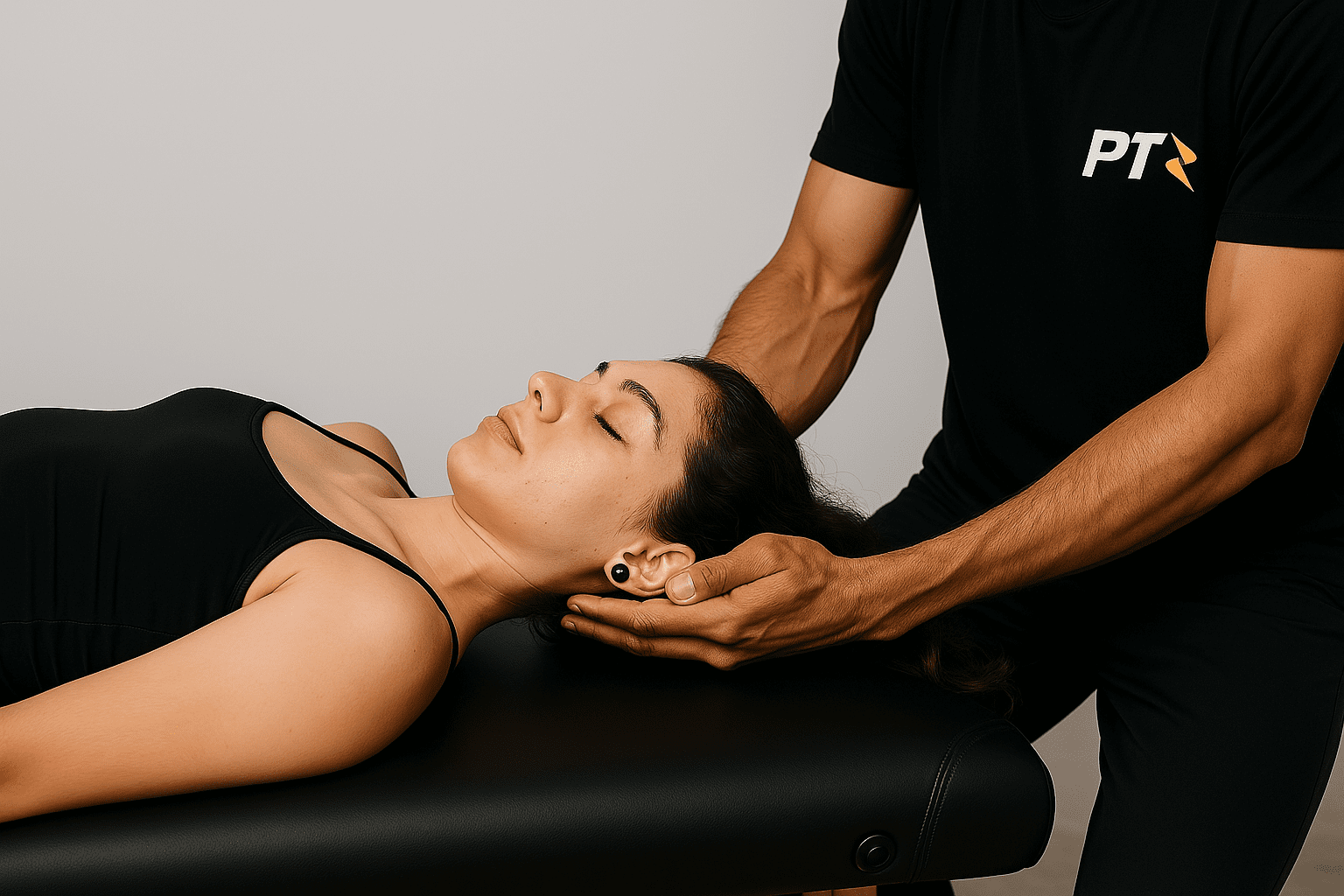Experience Gentle Relief with Manual Traction
- Alleviates pressure on spinal discs
- Decompresses stiff joints
- Improves circulation and nerve function
- Reduces pain and tension
- Supports posture and spinal alignment

What is Manual Traction and
How Does It Help?
Manual traction is a hands-on therapy in which a skilled physical therapist gently applies pulling or stretching forces to specific areas of the spine or joints. By carefully decompressing these structures, manual traction relieves pressure on discs, nerves, and surrounding tissues.
Unlike mechanical devices, manual traction allows for highly personalized adjustments based on a patient’s comfort level and specific symptoms. This targeted approach makes it particularly helpful for those dealing with disc displacement, chronic low back pain, or neck stiffness.
The gentle stretching helps lengthen tight muscles, improve joint mobility, and enhance blood flow—ultimately reducing pain and inflammation. Patients often report a sense of relief and improved range of motion even after just a few sessions of manual traction.
By combining traction with other therapies such as exercise, manual mobilization, and posture training, your physical therapist can maximize your recovery and prevent flare-ups. This holistic approach ensures that the body heals in balance, supporting healthier movement patterns and long-term relief.
Overall, manual traction is an effective, low-risk technique for many spine and joint conditions, providing a gentle yet powerful way to ease discomfort and regain functional movement.

In The Zone
Conditions Manual Traction Can
Help Address: (A-Z)
Disc Displacement
Manual traction carefully decompresses the spinal segments, reducing disc pressure and helping alleviate pain from displaced discs.
Low Back Pain
By gently stretching the lumbar region, manual traction relieves tension and helps reduce chronic or acute low back pain.
Neck Pain
Manual traction can decompress the cervical spine, easing stiffness and pain in the neck, while improving overall mobility.
Radiculopathy (Cervical and Lumbar)
By relieving pressure on pinched nerves, manual traction can help reduce radiating arm or leg pain caused by cervical or lumbar radiculopathy.
Sacroiliac Dysfunction
Manual traction helps align and decompress the SI joint area, reducing stress on ligaments and muscles around the pelvis and lower back.
Common Questions About Manual Traction
1. Is manual traction painful?
Most patients find manual traction to be comfortable or experience only mild stretching sensations. Your therapist will adjust the level of force based on your tolerance, making sure the treatment remains gentle yet effective.
2. How many sessions will I need?
The frequency and total sessions vary by individual. Some notice relief after just a few visits, while others with chronic conditions may require several weeks. Your therapist will evaluate your progress and adjust your plan accordingly.
3. Will it fix my disc or joint problems permanently?
Manual traction helps reduce symptoms by decompressing and aligning affected structures. However, long-term improvement usually involves a combination of therapy techniques, home exercises, and posture corrections to maintain proper alignment.
4. Are there any risks or side effects?
Minor soreness or mild discomfort can occur if the traction force is higher than your tissues can handle. A qualified physical therapist will monitor and adjust the force to minimize risks. Severe complications are rare when performed properly.
5. Should I combine manual traction with other therapies?
Yes. Manual traction often works best when combined with stretching, strengthening exercises, and other manual therapies. This comprehensive approach addresses both the underlying cause of pain and immediate symptoms.
6. How do I know if manual traction is right for me?
A licensed physical therapist can evaluate your condition, medical history, and goals to determine if manual traction is appropriate. They’ll rule out any contraindications like severe osteoporosis or spinal instability before recommending traction.
7. What should I do after a traction session?
Hydrate well, perform any recommended stretching or light exercises, and avoid sudden intense movements for the rest of the day. Your therapist may suggest using heat, ice, or gentle mobility drills to support ongoing healing.














